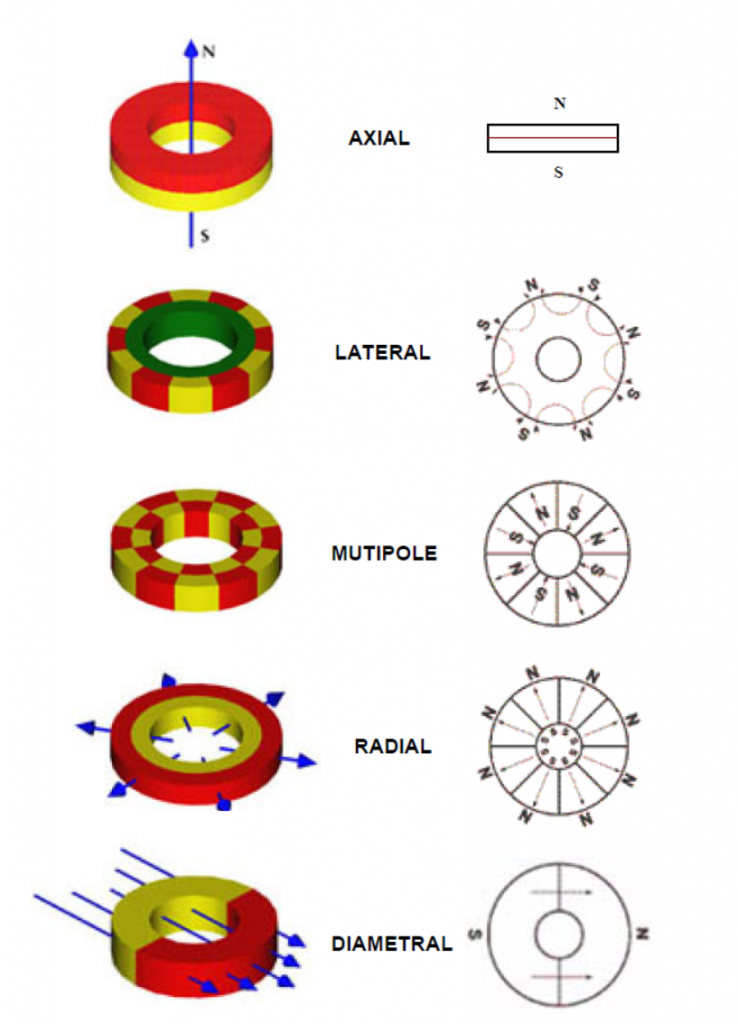Magnetization Process
Magnetization Process
To make a magnet “magnetic” it must be exposed to a strong external magnetic field. This field reorganizes the magnet’s domain structure and leaves the magnet with a remanent magnetization (Br). If a magnet is isotropic, the remanent magnetization has the same direction as the external field. Meanwhile, an anisotropic magnet can only be magnetized in its anisotropy direction.
The most common method of magnetizing is to let a very short current pulse go through a conductor or a coil. The short pulse is generated from a magnetization machine, which is basically a powerful capacitor together with a controller. Different materials require different lengths of current pulse. The resistivity of a material provides a prediction of what the magnetization pulse should look like. A material with high resistivity can be magnetized with a pulse of a few micro seconds, while a more conductive material may need several hundreds of a second longer pulse. Also, the volume of a magnet is of importance for the length of the current pulse.
During the magnetizing process, Eddy Currents are produced in an electrical conducting material. Eddy Currents create a magnetic field which is in the opposite direction of the applied field.
Besides various pulse lengths, different materials need different strengths of the magnetizing field. Coercive force (intrinsic) is the property of the material that decides what magnetic field strength that is needed for the magnetization. Axial and diametrical magnetization can be made in standard inductors, i.e. solenoids. However, radial, multiple pole, or any other complex magnetization has to be done in a specially built magnetization fixture.
Magnetizing and Testing Equipment
Magnetizers:
- Capacitive Discharge
- Direct Current
- Half Cycle
- Permanent Magnet
Fixtures:
- Wire Wound Multipole
- Solid Copper Plate
- Wire Wound Solenoid s
Testing:
- Fluxmeter Coil
- Gaussmeter
- Permeameter
Introduction

Magnetization Types
